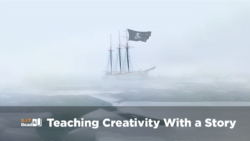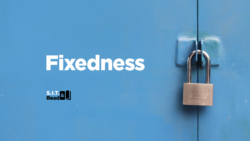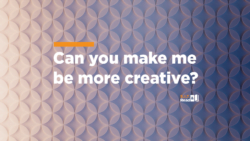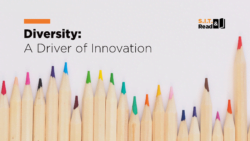Teaching Creativity With a Story
Lesson From Paul Smith
Creativity is considered by many to be a rare, elusive gift only musicians or bohemian New York artists possess. And to be sure, some people are born with more than an average amount of it. But everyone has the capacity to be creative. Many of us simply don’t call on it very often. When you intentionally call on that capacity inside, really call for it, you’ll realize it can be summoned. That’s a lesson Michael Margolis learned at an early age.
Michael grew up in Lausanne, a city in western Switzerland perched on the north shore of Lake Geneva. He describes his father as “a mad scientist and inventor.” His mother, Leslie, was a teacher, artist, and toy designer. “So I never knew if my day was going to be an art project or a science experiment,” he muses. Importantly, Michael recalls climbing in the family station wagon on many weekends and driving around to rummage sales. “What everyone else was getting rid of, we would buy.” They referred to other people’s trash as “super-junk, because we would build things with it.” As a result, their basement was always well stocked with super-junk.
When Michael was six years old, he remembers his older brother David working on an art project at home with some clever material their mom had given him. And, as can happen between siblings, Michael got jealous. “Why does David always get the cool stuff? That’s not fair!” Most such squabbles were tame enough. But for whatever reason, this time Michael was hysterical over it. “I threw a complete tantrum. I was kicking and screaming and huffing and puffing.”
Mom quickly intervened. “Michael, Michael, take a breath, son. Just wait here. I’ll be right back.” She soon emerged from the basement with something in her hands. Michael was still upset and sniffling, so Mom had to work to get his attention.
“Michael, look here, son. Look at this. I have something for you.” And she handed him an old wooden box.
Michael didn’t know it at the time, but what she handed him was an old sewing box, part of her collection of super-junk. And it was no longer in any shape to serve as a sewing box. One of the covers was missing. It was badly chipped on another side. And the hinges were rusty. But she got him to at least look at it. He quickly noticed that this box didn’t open from the top like most boxes. It opened from the sides, with nested layers of trays that splayed out like a fishing tackle box the further you pulled them. And then she asked Michael the critical question. She said, “Michael, what do you see?”
Still sniffling and cranky, all Michael could come back with was, “I don’t know what you’re talking about, Mom. It’s just a box!”
Undaunted, Mom repeated slowly, “Michael, what do you see?”
So Michael calmed himself and finally took a good look at the box for a moment. And then another moment. And then finally, with a bolt of excitement and discovery, he shouted, “Oh, it’s a pirate ship!”
“Well done, Michael,” Mom said with a smile. “Now let’s go build it.”
And with that the two struck off to the basement for more supplies. They found some old empty shotgun shells that became cannons for the deck. An old wooden centipede toy held together with springs sacrificed its legs, each of which became a crew member on board the ship. Then Leslie dug into a cupboard full of old wedding gifts and mementos and pulled out a set of doily napkins that had never seen use. When she presented them to Michael, he beamed, “Hey, you found sails!”
By the time they were done, it was a beautiful piece of art and a finely functioning pirate ship Michael is still proud of today.
Michael took away two lessons from that day. First, the joy of reinvention and reinterpretation: “How you can take things that are old and discarded and remake them in a new way.” And second, he learned to see possibilities where none readily appear, like seeing a pirate ship in an old sewing box.
For our purposes here, however, what’s important is the brilliant way Michael’s mother taught him to summon that creativity. She did it by asking him the simple question, “Michael, what do you see?” And she didn’t let up until he’d given her an answer. It wasn’t simply a question. It was an invitation to use his imagination.
If you want to summon creativity—in your young person or in yourself— try following Leslie Margolis’s lead. Look at your subject, and ask the question, “What do you see?”
(To our regular readers, you should recognize that last question to be the same as the Principle of Function Follows Form, a part of the SIT innovation method.
Adapted from PARENTING WITH A STORY: Real-Life Lessons in Character for Parents and Children to Share by Paul Smith
Paul Smith is a bestselling author who’s newest book, Parenting with a Story, documents 101 inspiring lessons like this one to help you, and your kids, build the kind of character anyone would be proud of. He’s a former director of consumer research and 20-year-veteran of The Procter & Gamble Company. Today he is a corporate trainer on leadership through storytelling based on his bestselling book Lead with a Story: A Guide to Crafting Business Narratives that Captivate, Convince, and Inspire. You can find Paul at www.leadwithastory.com and on Twitter as @LeadWithAStory.







